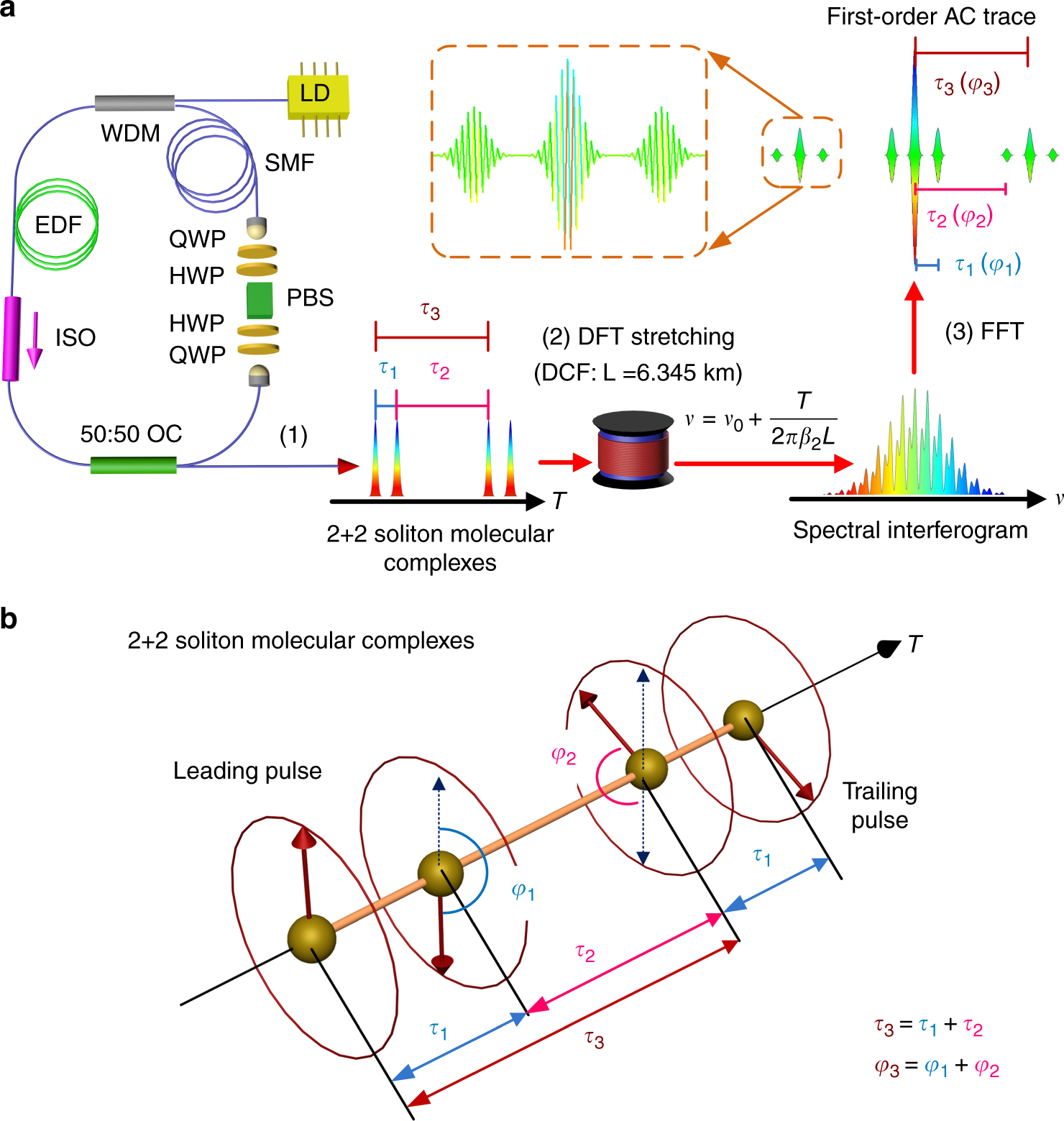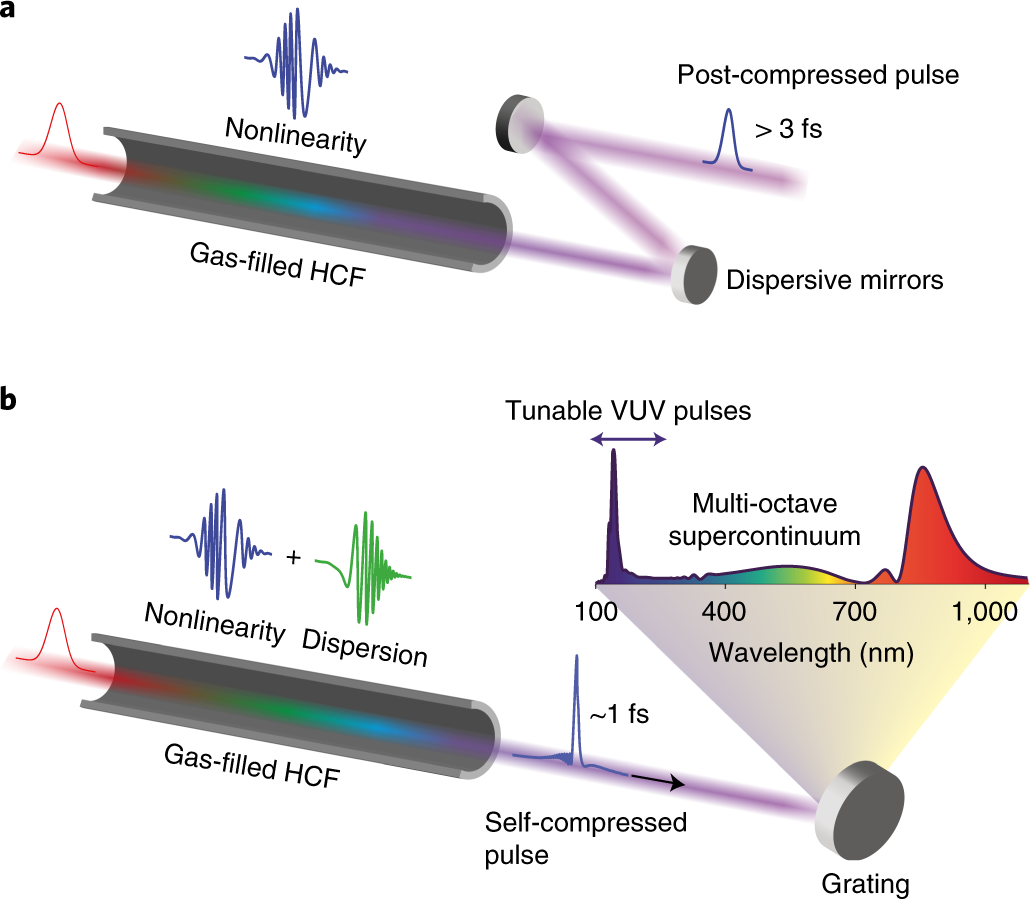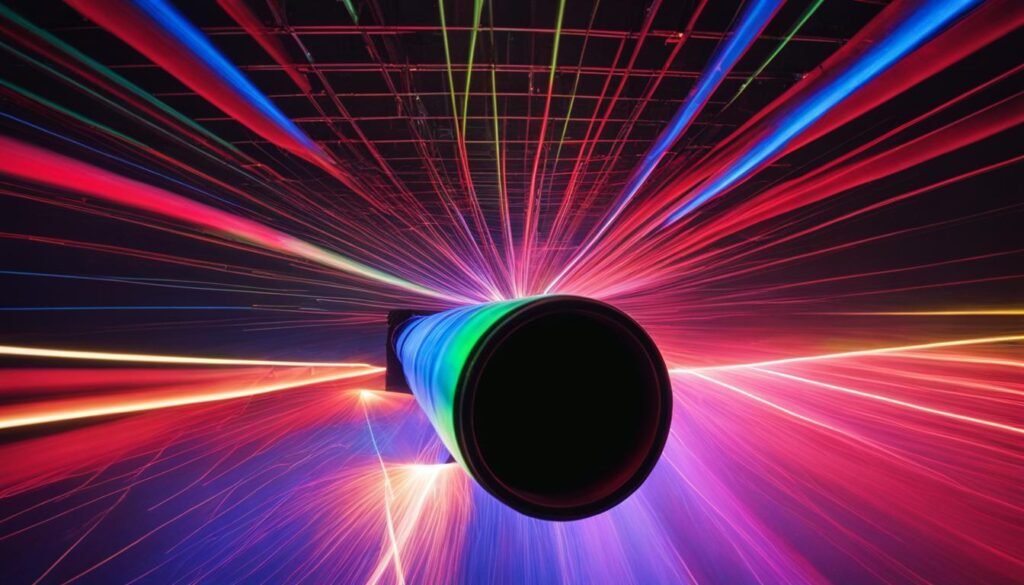
Source: Nature
Understanding Quasi-Soliton Pulses in Mode-Locked Lasers
Mode-locked lasers are essential tools in modern optics, used for generating ultrashort pulses of light. A fascinating phenomenon within these systems is the formation of quasi-soliton pulses. This blog post explores the nature of these pulses, their formation, and their applications.
Basic Concepts of Solitons and Quasi-Solitons
A soliton is a self-reinforcing solitary wave that maintains its shape while traveling at constant speed. In optics, solitons occur due to a balance between dispersion and nonlinearity. However, in many practical laser systems, these conditions are not perfectly met, leading to the formation of quasi-solitons.
Quasi-solitons are pulses that approximate true solitons under certain conditions. They are prevalent in mode-locked lasers where the dispersion and nonlinearity are not continuously distributed but occur in discrete segments. Despite these variations, quasi-solitons exhibit soliton-like behavior over one round trip in a laser resonator.
Formation of Quasi-Solitons in Mode-Locked Lasers
In mode-locked lasers, light pulses circulating in the resonator experience chromatic dispersion and Kerr nonlinearity. When the net dispersion is anomalous, and combined with a positive nonlinear index, quasi-soliton pulses can form. These pulses are beneficial for generating short pulses with minimal chirp.
Role of Saturable Absorbers and Nonlinear Phase Shifts
The stability and characteristics of quasi-soliton pulses can be influenced by the strength of saturable absorbers and the magnitude of nonlinear phase shifts. By optimizing these parameters, the stability limit of the pulses can be effectively managed.
Applications in Different Laser Types
Quasi-solitons are not limited to a single type of laser. They are observed in various systems, including solid-state bulk lasers, fiber lasers, and semiconductor lasers.
Semiconductor Lasers
In semiconductor lasers, particularly vertical external-cavity surface-emitting lasers (VECSELs), quasi-solitons form under normal dispersion conditions. Here, changes in carrier density induce nonlinear phase changes similar to the Kerr effect but with a negative nonlinear index. This allows the formation of pulses close to the Fourier transform limit.
Fiber-Optic Links
In fiber-optic communication systems, quasi-solitons can occur due to the periodic modulation of pulse energy in long transmission lines with erbium-doped fiber amplifiers. Tailored dispersion management helps in mitigating fiber nonlinearities, ensuring efficient pulse propagation.
Simulating Pulse Propagation
Understanding the behavior of ultrashort pulses in complex systems often requires numerical simulations. Such simulations provide insights into pulse dynamics at every point in the system, aiding in the design and optimization of laser systems for various applications.
Conclusion
Quasi-soliton pulses are a crucial aspect of advanced laser systems, offering the advantages of solitons without requiring perfect conditions. Their study and application in mode-locked lasers and fiber-optic systems continue to drive innovation in photonics, paving the way for new technological advancements.

Source: Nature
Feel free to comment your thoughts.



